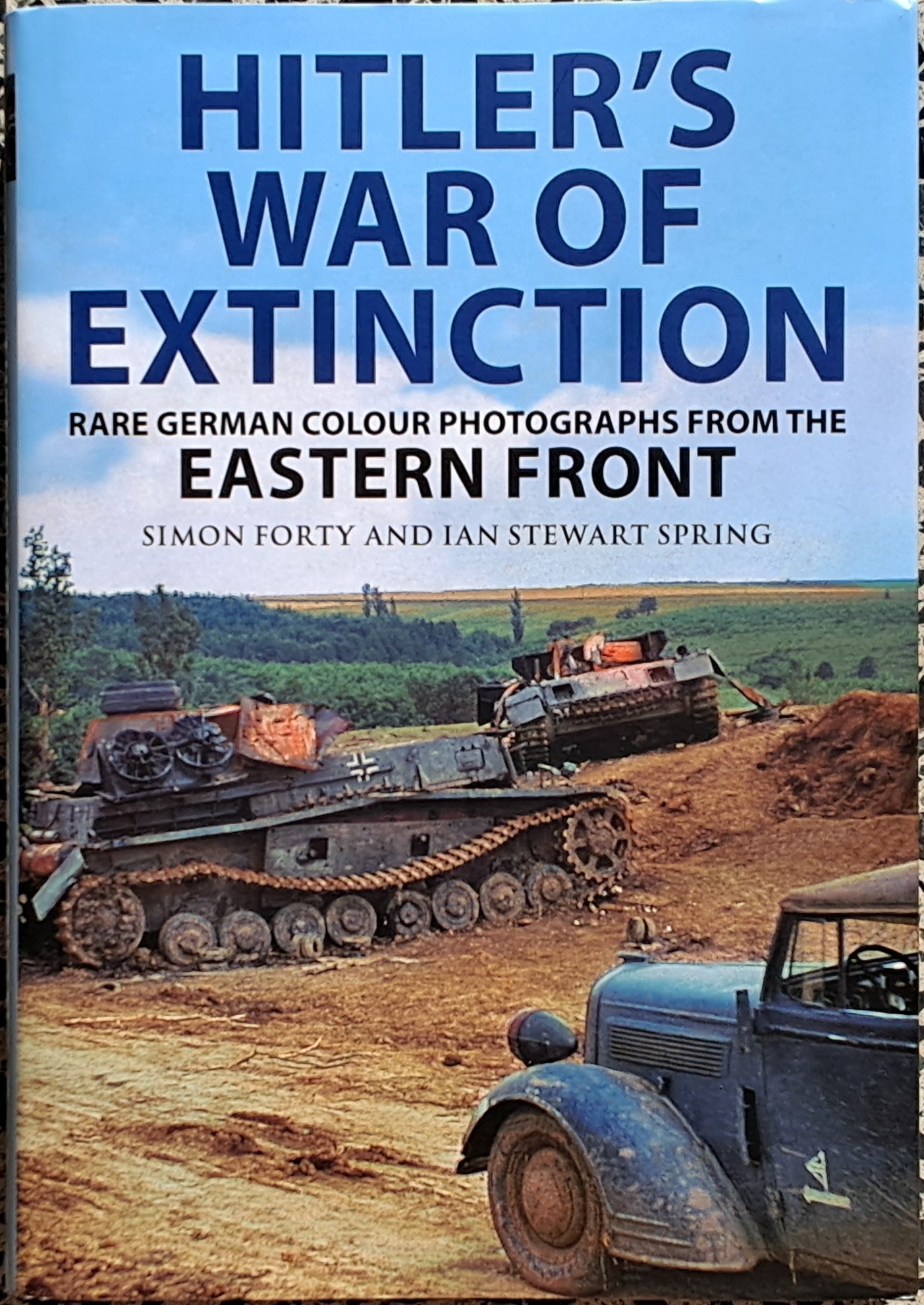The Eastern Front was where the war against Nazi Germany was lost and won. More people died there in the battles and destruction than all the other theatres put together. From the Arctic snows of Finland to the vast steppes of the Ukraine, the fighting took place in every sort of landscape and every weather condition: sub-zero temperatures that froze engines and weapons, mosquito-infested swamps, the raputitsa mud that brought mechanised armies to a halt, and the huge industrial cities that were fought over street by street and house by house.
What was it like to fight there? Hitler's War of Extinction from the Eastern Fronttakes the reader into the thick of the battle lines in vivid colour. First-hand accounts from reports and diaries provide soldiers' insights to accompany the candid photos of life and death to provide an evocation of what it was like to fight for survival on the Eastern Front.
Boasting more 250 original colour photographs, Hitler's War of Extinction: Rare German Colour Photographs shows the visceral nature of the battle between two intolerant ideologies that would leave upwards of 25 million servicemen and civilians dead.
The book is broken down into several chapters beginning with Introduction p.4, then
1. The German home front p.25
2. Behind the front lines p.76
3. On the attack p.126
4. In defence p.198
5. The end p.268
Sources and further reading p.286
An incredible book consisting of page after page of clear colour images that are well captioned and loosely connected by theme.
Each chapter opens with approximately a page of explanation to set the tone or theme of the chapter, then it is into the images themselves. And none of those images are a disappointment. There is good analysis of the images, which are all sharp and on topic, and the author calls out interesting detail where relevant.
The commentary is well written, balanced, and briefly discusses a range of subjects, for example how Hitler (and Stalin) both attacked the opposition in dehumanising ways to make it easier for soldiers to hate the other side, that Germany did not go to full mobilization until late in the war, German produced more in 1944 than any other time in the war, and crimes committed by the invaders.
The captions support and explain the images well, including firsthand observations from the men there. There are a few examples in the images below.
thank you, Greenhill Books, for the review sample and an incredible read.
A rather jarring pair of images, as the author notes, these men were strangled to death, not hung.


Some good analysis of the vehicle seen.

A detailed explanation to accompany the images


The Luftwaffe is included, too.

Stalin traded space (and lives) for time; he had plenty of both.

A well concealed bunker.


























